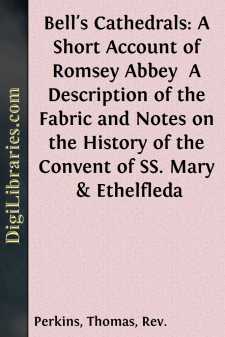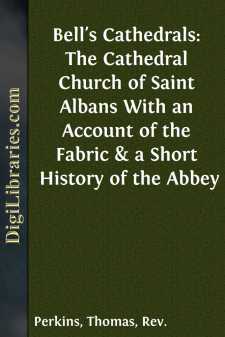Categories
- Antiques & Collectibles 13
- Architecture 36
- Art 48
- Bibles 22
- Biography & Autobiography 813
- Body, Mind & Spirit 142
- Business & Economics 28
- Children's Books 14
- Children's Fiction 11
- Computers 4
- Cooking 94
- Crafts & Hobbies 4
- Drama 346
- Education 46
- Family & Relationships 57
- Fiction 11829
- Games 19
- Gardening 17
- Health & Fitness 34
- History 1377
- House & Home 1
- Humor 147
- Juvenile Fiction 1873
- Juvenile Nonfiction 202
- Language Arts & Disciplines 88
- Law 16
- Literary Collections 686
- Literary Criticism 179
- Mathematics 13
- Medical 41
- Music 40
- Nature 179
- Non-Classifiable 1768
- Performing Arts 7
- Periodicals 1453
- Philosophy 64
- Photography 2
- Poetry 896
- Political Science 203
- Psychology 42
- Reference 154
- Religion 513
- Science 126
- Self-Help 84
- Social Science 81
- Sports & Recreation 34
- Study Aids 3
- Technology & Engineering 59
- Transportation 23
- Travel 463
- True Crime 29
Bell's Cathedrals: A Short Account of Romsey Abbey A Description of the Fabric and Notes on the History of the Convent of SS. Mary & Ethelfleda
by: Thomas Perkins
Categories:
Description:
Excerpt
CHAPTER I
The etymology of the name Romsey has been much disputed. There can be no doubt about the meaning of the termination “ey”—island—which we meet with under different spellings in many place-names, such as Athelney, Ely, Lundy, Mersea and others, for Romsey stands upon an island, or rather group of islands, formed by the division of the river Test into a number of streams, which again flow together to the south of the town, and at last, after a course of about seven miles, empty themselves into Southampton Water. But several derivations have been suggested for the first syllable of the name. Some writers derive it from Rome, and regard Romsey as a hybrid word taking the place of “Romana insula,” the first word having been shortened and the second translated into Old English, or Saxon as some prefer to call it. Now it is true that there were several important Roman stations in the neighbourhood: Sorbiodunum (Old Sarum), Brige (Broughton), Venta Belgarum (Winchester), and Clausentum (near Southampton), and in passing to and fro between these the Roman legions must frequently have marched either through or near to the site of Romsey. Roman coins found in the immediate neighbourhood clearly show that the place was inhabited during the Roman occupation. Another derivation is the Celtic word “Ruimne” (marshy); this would make the name mean “Marshy island,” and there can be no doubt that this would be an apt description of the place in olden times; against this may be alleged that again the word would be hybrid. Yet another derivation which avoids this objection is the Old English “Rûm” from whence we get “room” and if we adopt this derivation Romsey, or Rumsey as it is still sometimes written and more often pronounced, would mean the roomy or “Spacious Island.” The reader can form his own opinion as to which is the most probable of these three suggestions. The writer is inclined to favour the third. But the visitor who, arriving at the railway station either by the branch line via Redbridge or by that which runs from Eastleigh, or from Salisbury, or Andover, proceeds to the Abbey, would not realize when he arrived at his destination that he was in an island, for the minor streams are not spanned by bridges, but have been completely covered in and run through small tunnels beneath some of the streets.
We have no records of Romsey before the original foundation of the Abbey, nor indeed for many years afterwards. The first authentic mention of the abbey is found in the chronicle of Florence of Worcester, who died in 1118, and whose work, at least that part of it which deals with English history, is a Latin translation of the Old English Chronicle. He writes “In anno 967. Rex Anglorum pacificus Edgarus in monasterio Rumesige, quod avus suus Rex Anglorum Eadwardus senior construxerat, sanctimoniales collocavit, sanctamque Marewynnam super eas Abbatismam constituit.”
This Eadward, also surnamed the Unconquered, was the son and successor of the greatest of the Old English Kings, Ælfred, and reigned from 901 to 925....




